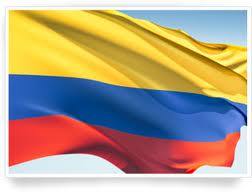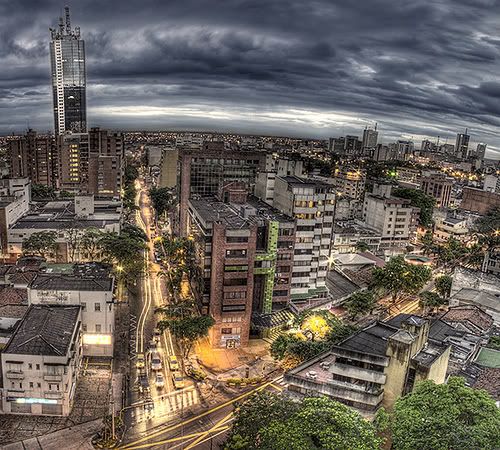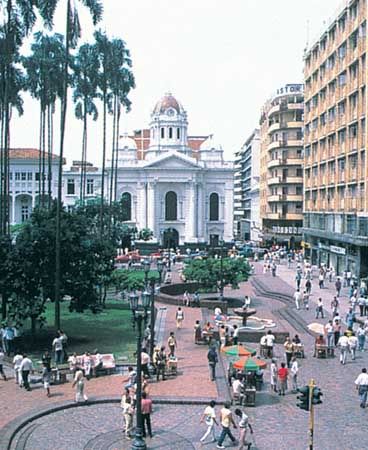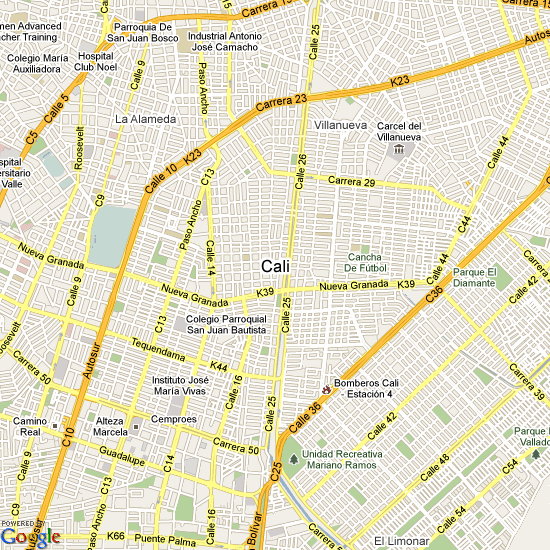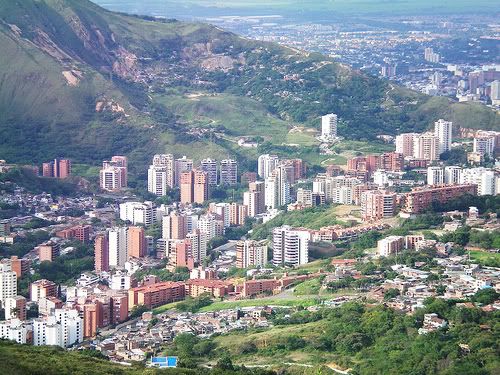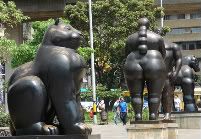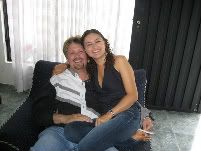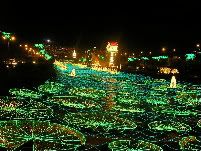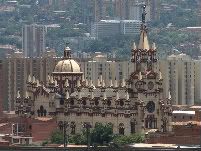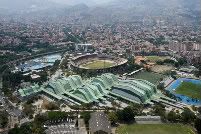|
Cali...
Santiago de Cali, simply referred to as Cali. Located in western Colombia and the capital of the Valle del Cauca Department. With a population of 2.5 million, makes this the third largest city in the country. It has one of the fastest growing economies and infrastructure in the country because of its geographical location. With it's weather it's one of Colombia's tourism hotspots.
For spring breakers and those hoping to have fun, there may be no better place than right here. This little slice of South American life is known for its nightlife, including bars, nightclubs and other late night activities. The city has an area known as “Party Street” for its high concentration of bars and clubs.
Geography
The city is located in a valley and is completely bordered by mountains to the West, Farallones de Cali are the closest to the city. The Eastern part of the city is bordered by the Cauca river, North and South both are extended plains, in the first one you can find the industrial city of Yumbo part of the metropolitan area, to the south you can find Jamundí, also part of the metropolitan area. The city is mainly flat, but there are areas mostly to the West that are Mountainous, like San Antonio and La loma de la Cruz, both are tourist sites.
There are Several rivers that descend from the Western Mountain Range and empty into the Cauca River those rivers pass through the metropolitan area. In the western part of the city the Aguacatal River flows into the Cali River, which continues on to the Cauca River. In the south the rivers Cañaveralejo, Lilí, and Meléndez flow into the CVC south channel which also empties into the Cauca River. Farther south, the banks of the Pance River are a popular place for recreation and leisure.
Weather
Weather is a tropical savanna climate. The local climate is semi-tropical as the Western Mountain Range screens the flow of humidity from the Pacific coast towards the interior of the country. In the afternoons you'll enjoy a fresh cross breeze that originates in the west and blows east. The Western Mountain Range rises from an average of 2,000 meters above sea level in the northern part of the city to approximately 4,000 meters to the south. Because of this variation in altitude, the weather in the northwest portion of the city is drier than in the southwest.
The average annual precipitation varies between 900 mm, (35.43 in.) to 1,800 mm, (70.866 in.) depending on the metropolitan zone for a citywide average of approximately 1,000 mm, (39.37 in.). Average temperatures are 24 °C (75 °F) with an average low temperature of 19 °C (66 °F) and a high of 30 °C (86 °F).
Due to its proximity to the equator there are no major seasonal variations. However, locals refer to the dry season as the city's "summer" period and call the rainy season "winter." There are typically two rainy seasons: from April to May and from October to November. Regardless, rain can be expected to fall at any point during the year nourishing the city's permanent green and lush vegetation.
Tourism
There is a variety of nightclubs and restaurants. In the city you can find whole districts dedicated to tourism, for example Granada, one of the most traditional districts, is full of gourmet restaurants, fashion stores and boutiques. Another spot to visit is along "La sexta" or the 6th street and Mbenga which has risen to be the most popular area for clubbing. Many types of nightclubs are there, as are restaurants and hotels. This area is usually called the "zona rosa" or pink zone, and is located in the north very close to Chipichape mall. In the recent years, the restaurant industry has boomed, ranking Cali very close to Bogotá in first-class restaurant options.
Main touristic centers:
Just walking could not mean a lot, but calenos love doing it in the late afternoon. After 4 pm, when heat goes down, breeze starts. It comes from the neighboring mountains, and refreshes souls and bodies as by the opinion of many. It is normal here to think of a shopping mall as a touristic place. Most of them are built like urban boulevards, with open-air walking corridors that look like a 'Main Street' side walk. With large facilities providing full amenities, Caleños love just talking walks in them, enjoying the fact that everything is at their hands.
The most traditional malls are Unicentro at south and Chipichape at North; both built in the open-air style. Others of this type are Palmetto Plaza, Jardin Plaza and Cosmocentro. Other malls in the area are Centenario, Unico and La14. Tens of smaller malls are spread all over the city. Certainly, bargains will found at most of these malls.
Downtown's 13th, 14th and 15th streets are the real & apparent bargains' hub of the city. In the 'San Andresito' or 'Pasaje malls (or any of that kind in the area) you can buy thousands of inexpensive China-made products. Street-selling is legal in only certain locations. There you could find one-of-a-kind crafts.
Crime
Crime is a serious problem. As of 2006, there were 1,540 intentional homicides in the city and 1,726 overall when including the metropolitan area. The rates for the city and metropolitan area were 62 and 63 per 100,000 respectively. By 2011 this has increased to 71 homicides per 100,000 inhabitants, which has lead certain commentators to declare a 'crisis of security'. Between January 1st and June 1st 2011 there were 923 intentional homicides within the inner city, which is considered a 5% increase compared to 2010.
The surge in violence in 2011 has partly been attributed to what has been described as an ongoing 'mafia war' between the 'neo-paramilitary' groups Los Rastrojos and Los Urabeños. Los Rastrojos are considered the 'heirs' of the Cali Cartel and Los Urabeños have their roots in Colombia's atlantic coast. Los Rastrojos are accused of committing at least 80 murders in 2011.
According to Colombia's most influential weekly magazine, Semana, there are over 1,700 assassins working for various groups in the city. As of 2011 urban militias, known as Milicias Populares, of the Revolutionary Armed Forces of Colombia are active in the city and surrounding areas. Local civilians and foreigners have been adviced by the DAS to take caution due to the risk of planted bombs and kidnappings.
The metropolitan police and the Colombian Army have taken action to stop several high profile bomb attacks against military and administrative centers in recent years, such as the multiple FARC attacks against The Palace of Justice in 2008 and 2010. These FARC militias in the metropolitan area are thought to number more than 1000, and have caused serious concern among the authorities as they have stepped up activity in 2011.
In November 2010 the U.S. State Department issued a travel warning of a sharp increase in crime and "terrorist activity". Great Links
|
Yo Amo! (-:
Hello! This is Todd & Johana. Welcome to our Colombia-Travel-Magazine. We both love Colombia & all it has to offer.
Our goal is to share & educate everybody & anyone wanting to listen. Let's join together and erase all the false & negative stereotypes Hollywood has presented.
Come on, lets have some fun & share our good times with others!
We work on our Sites from home. They are our main source of income...a great income!
Click the link below now to see how you can work from home. Any questions send us an email & we'll try to help you along.
